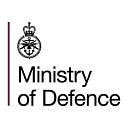NATO’s ‘eyes in the sky’: Air Commodore Martin
I am Air Commodore Andy Martin, Deputy Commander of the NATO Airborne Early Warning and Control Force. The mission of the Force is to ‘Deliver ready, responsive Airborne Early Warning, Battle Management and Command & Control’.
What is your role and what does it entail?
The force is comprised of the one NATO and one UK Component, each of which operates the Boeing E-3 AWACS aircraft.
The mission of the Force is to ‘Deliver ready, responsive Airborne Early Warning, Battle Management and Command & Control in support of North Atlantic Council Tasking’.
I also act as the Chief of Staff of the Force Headquarters, which oversees the generation and sustainment of overall Force capability, fulfilling all the functions of a national Air Force HQ for the NATO E-3A Component.
The Force Operates from its Main Operating Bases at Geilenkirchen, Germany, and RAF Waddington in the UK and maintains Forward Operating Bases/Locations in Italy, Greece, Turkey, and Norway.
What is it like working with NATO allies?
Working within NATO is a very rewarding and enjoyable experience — giving the opportunity to learn from other nations who often do things in a slightly different way to the UK, but still achieve the same high quality of output.
At the latest count, there are a total of 19 NATO nations represented at the NATO Airborne Early Warning and Control (NAEW&C) Force Main Operating Base.
I operate with all NATO Nations in the course of my duties.
The variety this provides gives us valuable insight into how to keep improving ourselves both individually, and as a team.
Alongside the rich professional experience, I would also comment that the international environment is a great place to be culturally and socially, and there is always an opportunity to learn something new in these areas too.
- #WeAreNATO: But what does that actually mean?
- In Pictures: Faces of NATO
- French fast jet Pilot Captain Rage flys Typhoon with the RAF
What has been a highlight in your current role?
It is particularly inspiring for me to be a part of a force that is a visible and highly capable symbol of NATO unity and cohesion.
The professionalism of the personnel within it is outstanding and the Air Control and Command (C2) and Battle Management role we fulfil is central to the success of military operations.
I am very proud that the capability delivered by both the UK and NATO continues to be key to sustaining NATO’s ability to deter, and if necessary to defend, against aggression — no matter where or when we are needed.
What was your role previous to this one?
My previous role was Deputy Assistant Chief of Staff for RAF Combat Air Capability Delivery.
The Combat Air Portfolio includes the Typhoon, F-35 Lightning, Non-Complex Weapons, and the RAF’s Future Networked Synthetic Training Capability Programmes.
My role was to deputise for the Assistant Chief of Staff responsible for these programmes and to directly run the Synthetic Training Programme.
What is the importance of the AWACS and the NAEW&C Force?
The Air C2 and Battle Management role is critical to success in modern military operations, acting as a force multiplier during the execution of combat operations.
The NAEW&C Force provides information to the C2 and Battle Management enterprise. It forms an integral part of the C2 chain for the execution of operations, ensuring optimum employment of the highly capable equipment and personnel made available to NATO by its member nations.
The NAEW&C Force directly contributes to NATO’s ability to fulfil its mission to deter, and if necessary defend its member nations.
What is the NAEW&C Force currently doing?
In addition to constantly contributing to the successful execution of NATO’s Standing tasks, such as Air Surveillance, Air Policing, and Assurance Measures, the NAEW&C Force continues to be a key part of the NATO Response Force and has been supporting the Global Coalition to Defeat Daesh since 2016.
In parallel, the Force is constantly training to maintain the high-end skills required to accomplish the broad spectrum of tasks it may face and to ensure it remains interoperable with all NATO Forces and those of NATO partner nations.
What is the future of the AWACS?
Both Components of the NAEW&C Force will be progressively upgraded in the coming years to ensure NATO’s battle-winning edge is sustained as the operational environment continues to evolve.
This will require the ability to control increasingly diverse capabilities across multiple Domains of operations.
In order to achieve this, the UK has initiated a programme to replace its E-3D Aircraft with the E-7 and the NATO E-3A Component is due to complete its next capability upgrade by the end of 2026.
To plan for the required follow-on capability, in its 2016 Summit in Warsaw, NATO launched the Alliance Future Surveillance and Control (AFSC) Programme, which is looking at options to meet NATO’s future surveillance and control needs.
